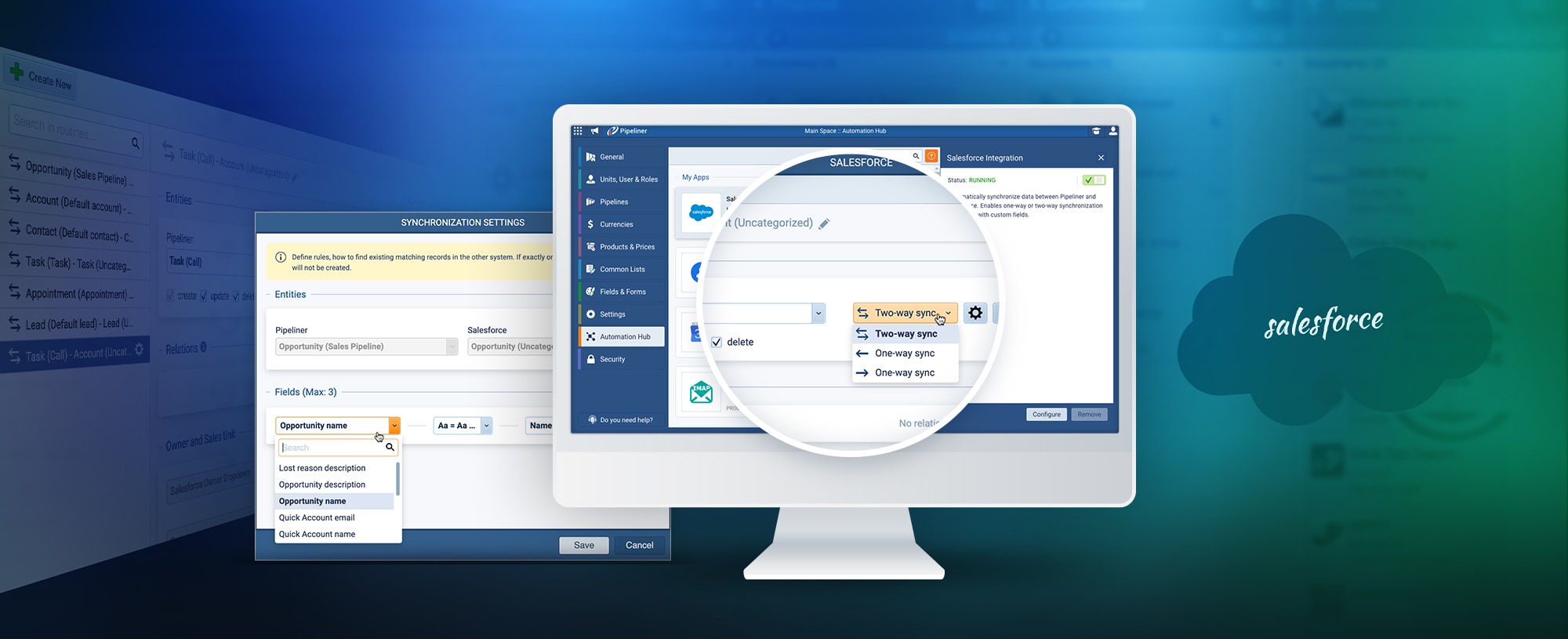Taking up the next topic in AccountAccount Account refers to a record of primary and background information about an individual or corporate customer, including contact data, preferred services, and transactions with your company. Management, let’s dive into what it means to fully understand your accounts.
I’ll begin by pointing out that account management is a team sport. It must be supported from the top-down, on a company-wide basis. It can’t be conducted in isolated areas of the company, as it usually entails dataData Data is a set of quantitative and qualitative facts that can be used as reference or inputs for computations, analyses, descriptions, predictions, reasoning and planning. from more than one department.
Data input might be required from CustomerCustomer Customer is an individual or an organization that purchases a product or signs up for a service offered by a business. Service, Support, perhaps even from Development. Such input is obtained digitally through webhooks, APIs, and other such methods (which we will cover in detail in the next chapter). If full support for account management isn’t coming from above, the departmental cross-functional support required won’t happen. But when it does, you can then create a real account management strategy.
Too often sales is regarded as a single-person sport like golf, instead of a team sport such as football. A golfer playsPlays Plays is an engagement strategy, set of actions, series of tactical steps, or an agreed upon selling approach developed to be repeatable and customized to deliver the highest likelihood of closing a deal with a specific group of prospective customers during a set period. their own game, by themselves. But look at a fantastic football team, such as the Tampa Bay Buccaneers under Tom Brady. While Tom Brady is without question the greatest quarterback of all time, he could not have gone from the New England Patriots, whom he led to 6 Super Bowl titles, to also leadLead Lead refers to a prospect or potential customer (who can be an individual or organization) that exhibits interest in your service or product; or any additional information about such entity. the Tampa Bay Buccaneers to a Super Bowl win, without the backup of a team. He doesn’t play the game by himself, as a golfer does. A game such as football lives by constant assists, whereas golf does not.
Understanding Comes from Data Input
Account management takes place through the data provided by the team. That data will lead to an understanding of that account.
The Pareto Principle, of which you may have heard, tells us that roughly 80 percent of consequences in any activity come from 20 percent of the causes. In sales, that means that 20 percent of a company’s customers generate 80 percent of the revenueRevenue Revenue is the amount of money a business generates during a specific period such as a year or a quarter; also called sales..
If you’re going to understand your company’s account management, you need to fully grasp this 20 percent of your customers who are generating 80 percent of your revenue. Are they equally the same? Are there differences? What are the similarities, if they exist?
At Pipeliner, we’re fully assisting you in this understanding with a new account management feature called White Space.
The White Space Feature
Using White Space you can, first of all, take a close look at one of your “20 percent” customers. You can examine what kinds of products or services you have sold to them. You can also use filters to analyze the period of time you’re examining and numerous other factors.
Putting this data into a graph, you can then track how sales of particular products have developed over time. You can also add in other products sold to that same customer, and compare the sales of one productProduct Product refers to anything (an idea, item, service, process or information) that meets a need or a desire and is offered to a market, usually but not always at a price. against others to that customer.
With Pipeliner’s unique filter functionality, you can then bring in accounts that are similar—accounts with similar revenue, industry, or account class. You can then expand the graph, and compare this account to other accounts to whom you have sold the same products.
It is this kind of detailed visual information that allows you to begin to formulate real account management strategies.
Account Management Steps
Account management has very definite steps. To begin with, your company is simply delivering a commodity to a specification. You then deliver good products and services. The next step would be beyond just product and service delivery to delivering good service and support.
The most important steps are the last two—in terms of account management, these are the ones which any company wants to reach in terms of account management. In the fourth step, you contribute to your company’s business issues. In the fifth step, you are contributing to their organizational issues.
By the time you have attained the fourth and fifth steps, you will have a much higher standing with your customer company than if you were simply selling them product. And with your “20 percent” customers, these are the crucial levels that you want to reach. This is where you become very valuable to them, and they really need you.
Classifying Volume and Margin
For volume and margin, you could classify customers into four basic quadrants of a matrix. The classifications begin at the bottom with low volume, low margin. Next comes low volume, high margin. Then would come high volume, low margin, and finally high volume high margin.
You instantly know that your low volume, low margin customers aren’t part of the 20 percent that provide 80 percent of your revenue. Neither, really, are those that earn low volume and high margin. Others could have high volume and low margin—but what you’re really after is high-volume high margin. You’re working to increase the high-volume low margin to a higher margin, and the low-volume high margin to a higher volume.
So how does this get done? It doesn’t happen automatically—there are very definite steps you must take. You must create a strategy and an action plan.
The Right Tools
Next, take a good hard look at the tools needed to get to that high quadrant stage. Pipeliner’s White Space functionality provides a great deal of insight, which you need for your accounts. This insight must include the business needs of the customer. With this insight, you align your company’s needs with those of your customers and develop that action plan. That plan must involve all team members because, as we said, the salesperson cannot do it alone.
Pipeliner’s Org Chart functionality, which we covered in the last article, allows you to examine and analyze your prospect company’s stakeholders. You need to fully understand who is “friend or foe” within your customer company. If you don’t fully know each stakeholderStakeholder Stakeholder is an entity with an interest in a company, process, or product, and which is typically concerned about its wellbeing.’s standing as regards your product, it will be very difficult to engage with that company.
With the information from this Org Chart, you can begin to figure out how you can bring this account from low volume low margin, low volume high margin or high volume low margin to high volume high margin. What can you offer them, and who precisely can you offer it to? You can’t simply call them up and say, “Hi there! I see here that you’re at a low volume but high margin with us—we earn good money with you. How can we increase that?” No, it needs real strategic planning. We’ll go deeper into what that takes in our next few articles.
Laying the Groundwork
But as you can see, the groundwork is laid through isolating and analyzing the basic data. You first figure out who your “20 percent” customers are. You then figure out what they’re buying from you compared to your other customers, and how they compare in other ways. You collect data from wherever you need to—LinkedInLinkedIn LinkedIn is a social network for the business community., the web, or elsewhere. You look over your customer’s Org Chart and understand exactly who should be involved in expanding them. Once you’ve gained all of this insight, you start mapping out the strategy.
As you examine an account, you might discover, of course, that you’ve already made as much revenue as you possibly can from this company. In that case, you won’t be pursuing them in the matter of expansion. That doesn’t mean you lose them as a customer, but they’re not a priority in the area of strategic account management.





